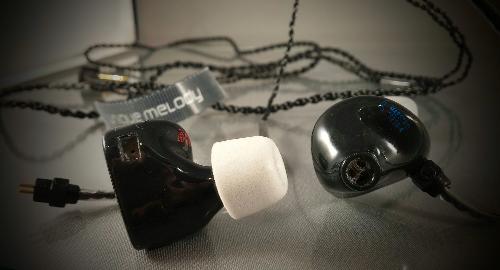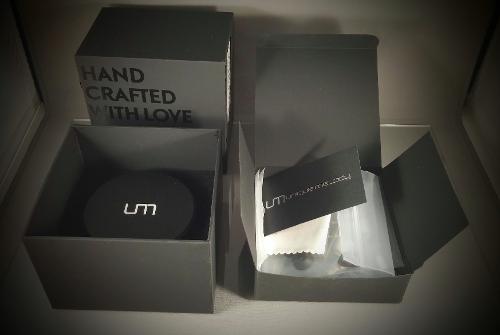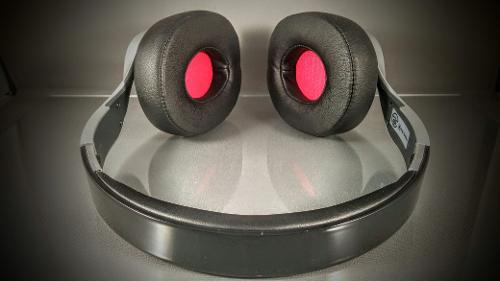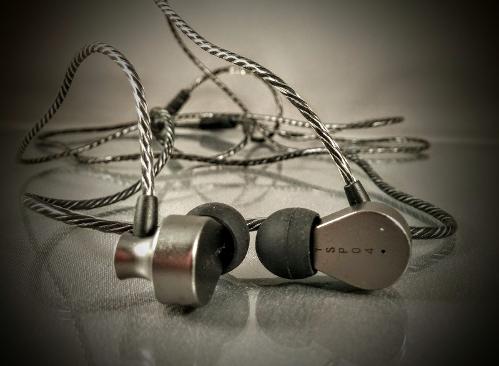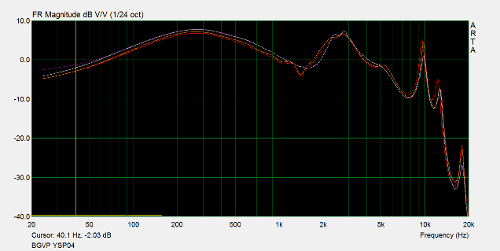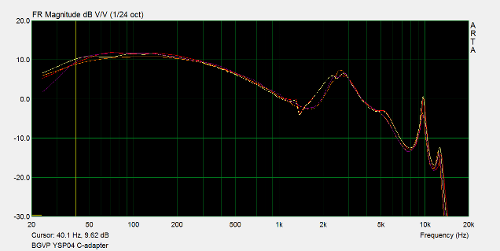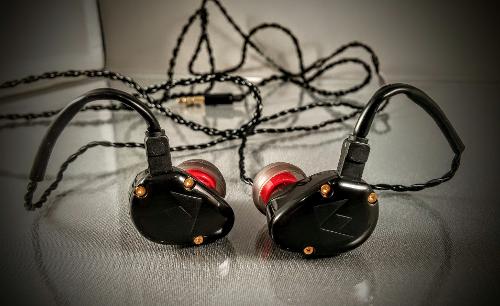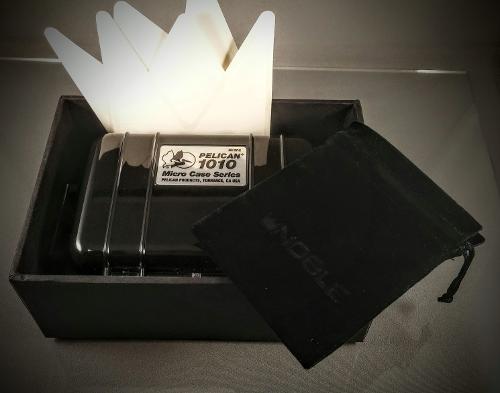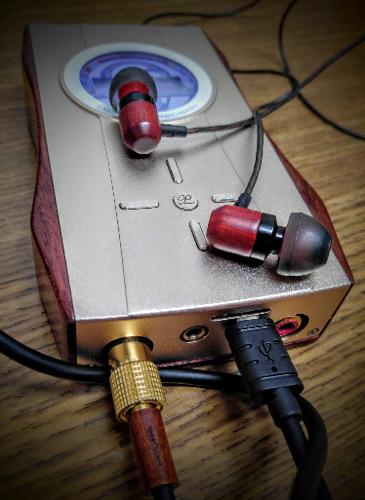
At the time this review was written, the Shozy Zero in-ear monitor was for sale at Amazon.com. Here is a link for purchase:
http://www.amazon.com/SHOZY-Zero-HIFI-In-ear-Earphone/dp/B01EHT6Z6C?ie=UTF8&keywords=shozy&qid=1464531193&ref_=sr_1_1&sr=8-1
Introduction
Being on Head-Fi for the last three years, I’ve learned whose opinions and impressions of products I should trust. One of those opinions is my good friend Tamal’s. When he said that Shozy was releasing a new in-ear monitor and it sounded great, I knew it would be something I should check out. Needless to say, the Zero sounds excellent. Today we will go over it with a comprehensive review
Disclaimer
I was given an opportunity to review the Zero in exchange for my honest opinion and review. I am in no way affiliated with Shozy. I would like to take this time to personally thank the good folks at Shozy for the opportunity, and my friend @RedJohn456 for the recommendation. If you are unfamiliar with Shozy, they make some really good portable DACs, amplifiers and a unique screenless DAP called the Alien. Here is alink to their site if you’re interested:
http://www.shozy-hk.com/
My Background
I AM NOT a numbers and graphs audiophile or sound engineer. Personal audio enthusiast? Absolutely! Headphone junkie? Possibly…
There’s something about quality DAPs, DACs, Amplifiers and Earphones that intrigues me. I want to hear any earphone that looks promising, in hopes that I can share my impressions with enthusiasts and help them find the audio product they’re looking for. My Head-Fi profile has a list of audio products ranked from favorite to least favorite. For me, this hobby is more about getting great price to performance ratio from a product, while having a variety of different gear to mix and match. With personal audio gear, we tend to pay a lot of money for minor upgrades. One thing I’ve learned over the last few years is that just because a headphone has a higher price tag, it doesn’t mean that it has superior build and sound quality.
I’m always looking for great audio at a great price. I’m after headphones and IEMs that give me the “WOW” factor. I can appreciate different builds and sound signatures as long as they are solidly built, with ergonomics and sound that is pleasing to my ears. It’s my pleasure to share my experiences with audio products and make recommendations based on gear I have owned and used.
REVIEW
Because I received a beta unit, I don’t have the retail packaging and all of the accessories. Because of this we will skip the unboxing section of the review.
Specifications and Accessories
Specifications
Sensitivity(at 1khz)94dB
Frequency Response 20Hz-18kHz
Input connector 3.5mm/1/8 inch gold-plated stereo TRS plug
Accessories
Zero earphone *1
Earphone bag *1
High quality rubber lining *3 Pairs
instruction book *1
Housings

The housing of the Zero are a combination of real rosewood and plastic. They are a relatively standard shape housing.

The nozzle is slightly wider than average and has a small notch missing from the bottom ring of each nozzle. The width and shape of the nozzle makes tip rolling a bit trickier than the standard in-ear monitor.
Cable, Y-Split, Cable Jack, Strain Reliefs

The Shozy cable is a thin and rubbery cable that seems fairly durable. There is a small amount of spring and memory. The cable will be subject to tangled if not handled in a manner that prevents this from happening. Zero’s Y-split and cable jack are both made with the same real rosewood material as the housings. The cable jack is a straight style gold plated 3.5 mm plug. Strain reliefs are subtle and adequate.

While I know that real rosewood and awesome sound quality are great aesthetics for an in-ear monitor in this price range, the Zero cable is on the cheaper side of things. I would have rather seen Shozy charge an extra twenty dollars for a more premium attached cable with a chin slider.
Functionality
The Zero has no microphone or remote. They are a plug and play device. Plug in, play music, enjoy the sound, repeat.
Ergonomics, Fit and Microphonics, Isolation
First things first, getting a proper fitting tip that seals well can be a challenge. None of the stock tips worked for me. I ended up using a gray and red tip purchased from Lunashops. The bore is wide enough to fit over the nozzle and they sealed well. Make sure to try and accomplish the same with your Shozy Zero and you will be rewarded with some great sound.
The Zero is a very standard fit that works both over and under the ear. Because there is no chin/neck slider, when wearing them over the ear I prefer to use aftermarket ear guides. This prevents the cable from unlooping from over the top of my ears.
Wearing them under the ear, I get a considerable amount of cable noise. Wearing them over the ear, microphonics are pretty much a non-issue.
Sound Review
I did my demo with my usual gear. I used an LG-V10 for smartphone use, and either my Shanling H3 or iBasso DX80 DAP for high fidelity portable use. For desktop use, I used my Toshiba Satellite Laptop in combination with a ifi micro iDSD playing at 32/192 kHz. I tested them with several other sources as well. I used Google Music in its highest download quality (320 KBPS), and also streamed FLAC via Tidal streaming service. I also used purchased and downloaded tracks in MP3, FLAC, WAV and DSD. I make sure that any gear I test has sufficient playtime before writing a review.
I used my usual same songs for testing gear:
“Limit to your love” by James Blake (bass speed, punch, response)
“Doin’ it Right” by Daft Punk (sub bass)
“Get lucky” by Daft Punk (bass to midrange transition resolution, male vocals)
“Madness” by Muse (soundstage, separation)
“Some nights” by Fun (soundstage and male vocals)
“The soundmaker” by Rodrigo y Gabriela (texture and imaging)
“Bassically” by Tei Shi (bass to midrange resolution, female vocals)
“Skinny Love” performed by Birdie (female vocals, acoustic playback)
“One” by Ed Sheeran (male vocals, acoustic playback)
“Outlands” from the Tron Legacy Soundtrack (symphonic presentation, imaging)
“Sultans of swing” by Dire Straits (detail, separation, balance)
“And Justic for All” by Metallica (driver distortion, treble response, rock playback)
“Ten thousand fists” by Disturbed (driver distortion, treble response, rock playback)
Note: Other tracks were used, but the listed songs were primarily used to assess and break down the gear’s response.
Source Selection
Shozy doesn’t share any specifics in terms of impedance or driver size. If I had to guess, I would say they fall somewhere between 25-35 ohms. They work good through just about any portable source I used. They sound great with a smartphone, and scale up well with DAPs and portable DACs and amplifiers. The better files and sources you use, the better the Zero will sound.
A neutral and more linear source will make them sound very natural with a warm tilt. Using a warmer and bassier source will make them follow suit. A very minor warm tilt isn’t pushed overboard by colored sources.
Plug Zero into your favorite source and play your favorite music. I can almost guarantee you’ll enjoy their sound with any quality source you use.
Sound Signature
The Zero has been reported as bassy and smooth. While I agree with this to a certain extent, I feel the Zero is a very natural and relatively balanced sound. Rather than say bassy, I would classify them as slightly warm tilted and non-sibilant. They are spectacular for their price, and beat many earphones that cost twice as much in terms of sound quality.
Putting price and performance into perspective, the Zero is fabulous. In this hobby, budget earphones often times perform at a level that ALMOST matches and rivals the summit-fi gear. If there’s anything that would make me say that Zero doesn’t do that many of my favorite (and usually much more expensive) earphones do, it doesn’t have the same airiness, detail and clarity I’ve heard from the best earphones available. Still, the Zero rocks in these regards, it’s just not on the most elite of elite levels. Simply put, the Shozy Zero gets my approval as being flat out awesomesauce. They are hard to fault. People are going to really like these things.
Bass
Bass on the Zero is very balanced and packs equal amounts of punch and rumble. There is a slight tilt towards a bass emphasis, but it’s tastefully done.
Sub bass tones extend well and will satisfy a diverse range of music lovers. When listening to bass lines of various genres of music, the Zero handled all tones with a quality level of resolution and response. Nothing seemed lacking. The Zero has deep soundstage that sounds very natural.
Midbass is in good proportion with the sub bass response and well done. There’s enough midbass to give them good dynamics, and not enough to be boomy or sound unnatural.
Midrange
A slight downward tilt from midbass tones leads to a dynamic lower midrange. This theme continues in slight downwards slope until reaching a small bump at upper midrange frequencies, giving vocals a nice sense of energy. All vocals and instruments have a warm tilt and nice bite at upper frequencies, making the Zero a very entertaining earphone.
Treble
Zero’s treble will be a hit with most people who listen to them. Simply put, the Zero has a pretty sizeable drop off at sibilant sounds. The dip takes place at a frequency range that makes the dip seem natural and far from harsh. Treble picks back up after 10 kHz, giving the Zero a sense of good extension. For me, the treble presentation of the Zero was probably my favorite part of their tuning. Their smooth and extended response in combination with the slight warm tilt and extension at sub bass tones makes them incredibly fun and non-fatiguing listen.
Soundstage and Imaging
The nice sense of depth and extension makes the Zero’s soundstage above average. A decent sense of clarity and balance gives them a decent sense of imaging, but the warm tilt prevents this from being elite.
Comparisons
VSONIC GR07BE ($85 to $150 USD on many sites)
The GR07BE is a hall of famer, sporting a bio-cellulose driver, articulating nozzle, and secure over the ear fit. It is a sentimental favorite, as it was the first earphone purchase I made that eclipsed the hundred dollar mark.
Comparing the two, I give a slight edge to the GR07BRE in terms of bass response. There’s something about the GR07BE combination of soundstage depth response that to this day is world class. Still, the Zero is no slouch, and is edged out by the slightest of margins. Midrange of the GR07BE is much drier and recessed as compared to the Zero. I prefer the warmer and more dynamic lower midrange of the Shozy offering. Treble on the Zero is much smoother than the somewhat sibilant GR07BE. My ears need a minute to adjust with both earphones when bouncing back and forth. The Zero is definitely the less fatiguing earphone of the two. Overall, this is an incredibly close contest that comes down to what I’m listening to and source I’m using. I’m going to end this by saying it’s a tie in terms of sound quality.
Build quality, accessories and fit/comfort goes to the GR07BE. I wish Shozy would have increased the price and put a more premium cable and chin/neck slider, and also offered more in terms of tips and accessories.
At the end of the day, the Zero is a smoother and less fatiguing earphone that can be worn under or looped over the ear. They come in at a much lower price tag, which leaves it up to the consumer whether the GR07BE tuning and over the ear fit is worthy of the increase in price.
Trinity Hyperion-Discontinued ($65 USD when for sale)
The Hyperion is a titanium microdriver earphone with a V-signature. They have an incredible cable and small metal housing.
Comparing the two, the hyperion has more sub-bass to my ears. Although it has tremendous depth that trumps the Zero, it can also be a bit boomy with some tracks. Although being a V-signature, the hyperion has some rich and full bodied midrange that is very entertaining. Still I give a slight edge to the Zero mids, as they are a bit more airy and balanced with the rest of their frequency ranges. Treble on the Hyperion is a bit crisper and more natural on the Hyperion, but can also be harsher at louder volumes. In terms of entertainment factor, I prefer the Hyperion. In terms of being non fatiguing and for long listening sessions, The Zero gets the upper hand.
Build quality and accessories goes to the Hyperion. Their cable is awesome, and tiny metal housing is very cool. In terms of which one to get, Zero is the only option at this point. Again, if being forced to pick one or the other, I can’t. They are both excellent in their own way.
Conclusion
The Zero is one of the best sounding earphones in the sixty dollar range. The real rosewood they used is awesome. The cable they used isn’t the greatest and leaves room for improvement in their next earphone release. Their sound is fatigue free, relatively balanced and dynamic. Their sound quality will impress many who listen to them.
Shozy has already established a great name for themselves with the Alien DAP and portable DACs and amplifiers. It’s very cool to see they can manufacture an very nice pair of in-ear monitors as well. I highly recommend the Zero IEM. They are a universally great tuning that will work with any source.

Thanks for reading and happy listening!




































































































